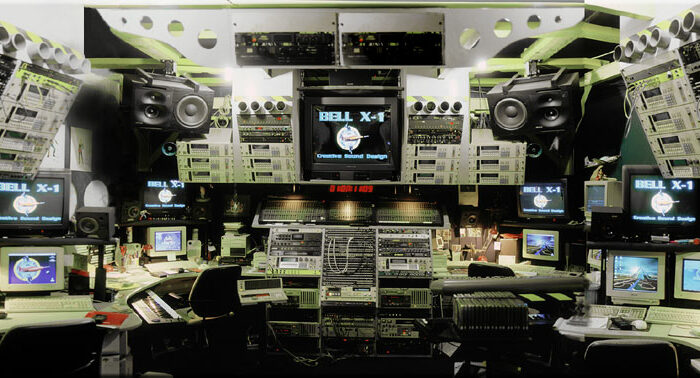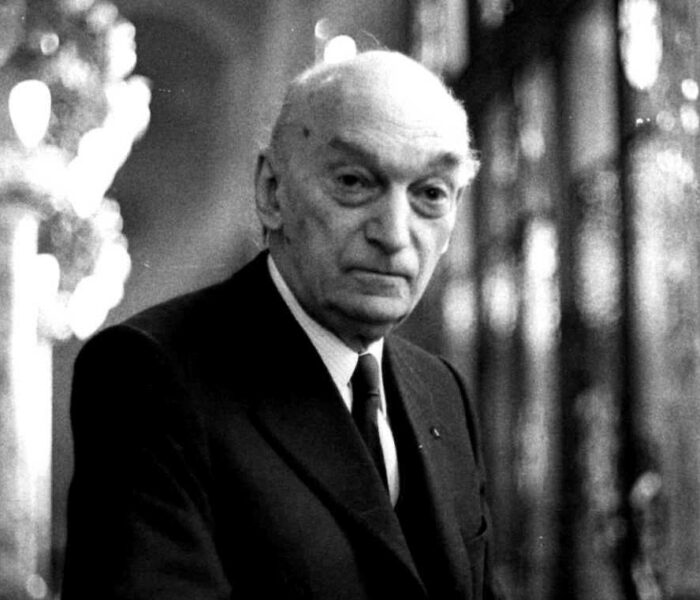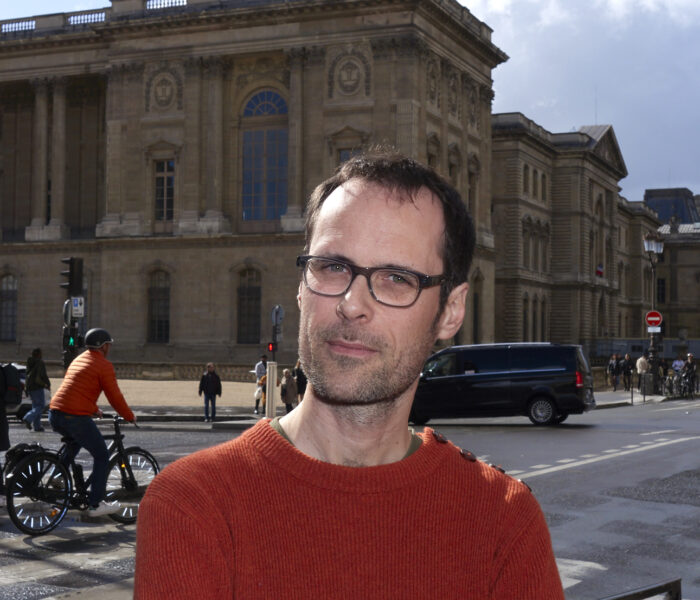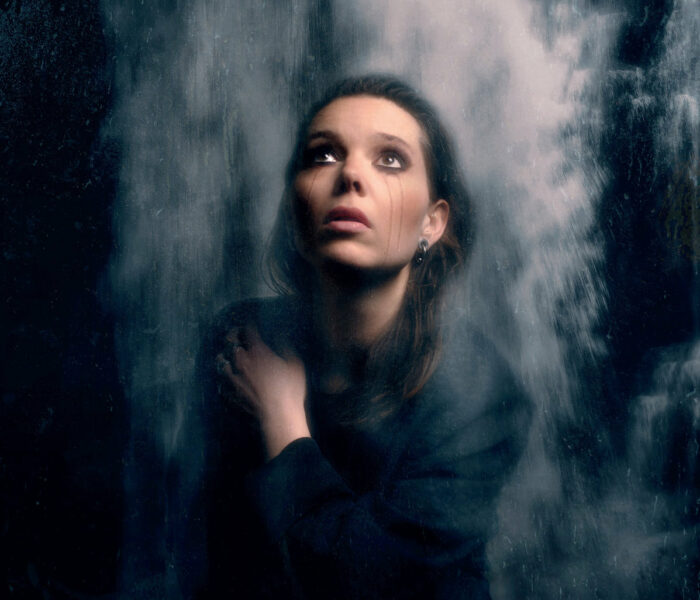Commencé il y a quelques semaines du vivant du compositeur, ce portrait se conclut au moment de sa disparition à 71 ans le 28 mars dernier. Plutôt qu’une classique nécrologie hagiographique, voici une évocation musicale en forme d’hommage, d’éclairage (et de poire aussi).
On comprend que l’on vient de perdre un musicien iconique quand tous nos réseaux sociaux, journaux et amis (musiciens ou producteurs) interrompent leurs habitus de communication pour partager une vidéo, une anecdote personnelle ou un album favori du disparu. On se précipite sur son clavier (d’ordinateur) pour exprimer sa tristesse. Et quoi de mieux pour un artiste que de publier ses propres exploits musicaux dans la musique du récent trépassé ou jackpot, une photo en sa compagnie pour se convaincre d’un « j’existe ! » ou pour préciser : « je le connaissais avant vous ! » Cette impudeur passée, le flux quotidien revient et de nouvelles musiques remplacent les anciennes. C’est le temps de l’introspection musicale qui débute.
Il faudra peut-être un certain temps pour mesurer l’importance de Ryuichi Sakamoto dans le monde de la musique. Célèbre dans le monde entier, sa notoriété restait néanmoins en dessous de quelques-unes de ses musiques légendaires. Il n’est jamais entré de plain-pied dans le star-system qui lui ouvrait pourtant les bras. Ses oreilles ouvertes à toutes les musiques l’amenèrent à collaborer avec une multitude de musiciens aux univers éclatés (Robert Wyatt, David Toop, Christian Fennesz, Alva Noto, David Sylvian etc.).
Mais qui était vraiment cet élégant musicien japonais dont l’art s’est tenu en équilibre entre l’avant-garde et la pop music, traçant habilement un pont entre un minimalisme sentimental ambiant et une exigence musicale sans cesse renouvelée.
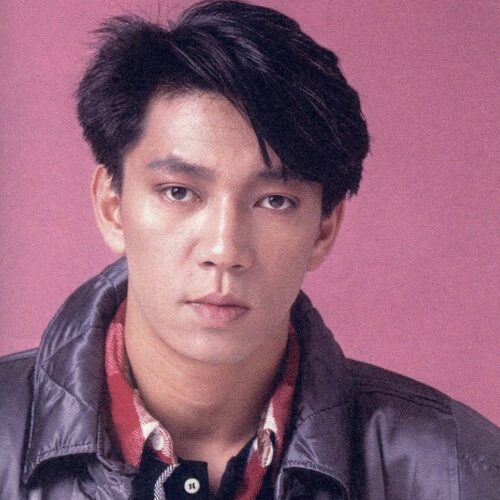

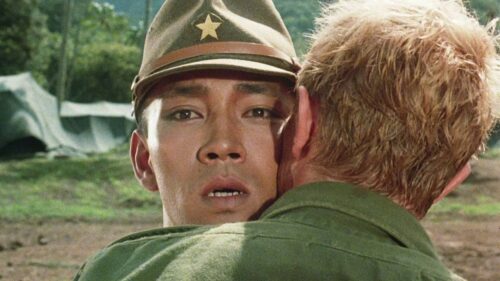
Un pionnier
À chacun son Sakamoto. Il y a ceux qui n’aiment que ses musiques de films (dans les versions originales bien entendu) et d’autres qui ne préfèrent que ses expérimentations synthé pop avec son ensemble Yellow Magic Orchestra, d’aucuns ne jurent que par sa musique électronique avant-gardiste teintée d’ambient. Mais tous se rejoignent pour admirer son talent de mélodiste hors-pair influencé, lit-on (pratiquement tout le temps – les journalistes se copient entre eux) par Debussy. L’impact qu’eut au Japon la musique de Debussy est inimaginable et il perdure encore (songeons ne serait-ce qu’à Toru Takemitsu ou Isao Tomita). La musique de Debussy est quasi sacrée dans ce pays fasciné par la musique française (une île porte le nom de Cortoshima en l’honneur d’Alfred Cortot). On sait à quel point la musique extra-européenne et les estampes japonaises ont pu subjuguer un Debussy (mais aussi des Ravel et Satie). Toutefois, c’est une facilité médiatique que de prétendre Ryuichi Sakamoto héritier de Claude Debussy de par son origine : un intérêt pour le gamelan, les cloches, le mode pentatonique et le piano ne suffisent pas pour être héritier de Debussy – Sakamoto lui-même s’en défendait. L’écoute de son dernier album en est la preuve. Inscrire Sakamoto en simple héritier de Debussy est réducteur voire faux : il est avant tout un pionnier original et novateur en son temps – là est leur point commun.
Car pour rappel, Sakamoto fut un des premiers maîtres japonais des synthétiseurs Moog, Buchla ou ARP : c’est d’ailleurs avec l’album Thousand Knives sorti en 1978 et composé sur synthétiseurs qu’il se fait remarquer des musiciens. Les références au compositeur français sont d’ailleurs bien maigres dans une discographie abondante – exception faite de cette version réussie, samplée et en boucle ad libitum du Prélude à l’après-midi d’un faune.
Musique absolument appliquée
Dans le film Ennio de Giuseppe Tornatore sorti en 2021 et qui retrace la vie du compositeur italien Ennio Morricone, une antienne percutante du musicien nous interpelle tout au long du film : toute sa vie, Morricone vécut avec un sentiment de honte vis à vis de son maître Goffredo Petrassi – chantre de la musique d’avant-garde italienne – car lui avait choisi la voie de la facilité en tant que compositeur de musiques de films et arrangeur à succès de mélodies qui plaisent au grand public. Morricone avait d’ailleurs créé deux expressions pour parler de ses deux facettes : il y avait la musique appliquée (entendez les bandes originales, connues et admirées de tous) et la musique absolue « dégagée de toute contrainte et dépendant totalement de la volonté du compositeur. »
Chez Ryuichi Sakamoto, il semble qu’il n’y ait jamais eu de différences entre ses musiques de films, ses musiques « absolues » et ses compositions rock-pop électroniques. Elles ne forment qu’un. Ses partitions de musiques de films restent bien évidemment les plus connues pour le grand public et cachent des œuvres, des albums qui lui tenaient nettement plus à cœur. En 2009, il tenait ces propos, terribles : « Je viens d’avoir 57 ans et je comprends que je n’ai pas changé le monde, que je n’ai laissé aucun morceau qui a changé l’histoire de la musique, je suis une personne insuffisante, je n’ai pas de talent. Je déteste de savoir que « Merry Christmas Mr. Lawrence » soit la seule chanson importante et reconnue mondialement ». Rendons lui hommage avec une autre de ses bandes originales tirée du film Babel du réalisateur Alejandro González Iñárritu sorti en 2006 (initialement sur Smoochy, un album rock de 1997).
Piano mon ami
Une constante dans son univers musical foisonnant et hybride : le piano acoustique. Il débute ses études musicales avec (on raconte qu’il pouvait jouer à toute vitesse la fameuse Étude virtuose La Campanella de Paganini/Liszt) et finira sa vie en lui confiant ses dernières notes. Toute sa vie il fut l’interprète de sa propre musique et il ne cessa que récemment de tourner dans le monde entier, seul au piano, à égrener les tubes tirés de ses albums et musiques de films.
Son jeu fin, aux lignes claires et chantantes, est celui d’un pianiste amoureux de son instrument. Contrairement à beaucoup de compositeurs de musiques de films d’aujourd’hui, Sakamoto était plus que capable de jouer la musique qu’il composait et il préférait l’interpréter lui-même.
Plus les années passent et plus il délaisse l’électronique (sans jamais l’abandonner totalement) au profit de l’acoustique ; du son naturel du piano à queue mais aussi des cordes (sublime thème de The Revenant). La simplicité de ses thèmes, justement, leur épure enfantine, l’apparente bien souvent aux minimalistes mais au fond, à l’écoute sérieuse de sa musique, on perçoit des harmonies et des élans mélodiques qui ont plus à voir avec un Satie (ou voire même un Fauré de la dernière période) et la répétition propre à un Glass ou Reich est relativement absente.
Il est aussi un maître incontesté de l’ambient, cette musique propulsée par Brian Eno mais inventée bien avant par Erik Satie avec sa Musique d’ameublement : une musique qui peut ne pas s’écouter attentivement, qui accompagne notre quotidien sans le perturber mais qui, quand on tend l’oreille recèle mille et une richesses. En 2017 cet amoureux du piano coordonne un hommage à Glenn Gould à Tokyo en reprenant ses quelques beaux thèmes et notamment andata, une de ses plus belles pièces pour piano qui n’est pas sans rappeler le dépouillement de Désespoir agréable de Satie.
12 : le testament et la synthèse
En 2014, les médecins lui diagnostiquent un cancer de la gorge. Il se retire quelque temps et prend le temps de se soigner et de se battre pour revenir en 2015 avec la musique de The Revenant d’Iñárritu – tout un symbole. La vie reprend son cours, de magnifiques albums fleurissent (Async notamment en 2017) mais malheureusement en 2021, il annonce être de nouveau atteint par le cancer et depuis juin 2022, se sait condamné, irrémédiablement.
Son dernier album 12 sorti en version digitale en janvier 2023 et en physique le 31 mars, trois jours après son décès est un testament musical qui réunit une synthèse esthétique de ce qui fait la « patte » Sakamoto. Ces 12 pièces composées seul au clavier et à l’ordinateur entre New-York et Tokyo sont un journal intime de son combat contre le cancer et certainement un de ses plus beaux disques. Sobrement il revient à ses fondamentaux : piano et électronique. Mais pas d’atermoiements ici : «Après être rentré “chez moi” dans mon nouveau logement temporaire après une grosse opération, je me suis surpris à chercher mon synthétiseur. Je n’avais pas l’intention de composer quelque chose ; je voulais simplement être inondé de sons. Je vais probablement continuer à tenir ce genre de “journal.»
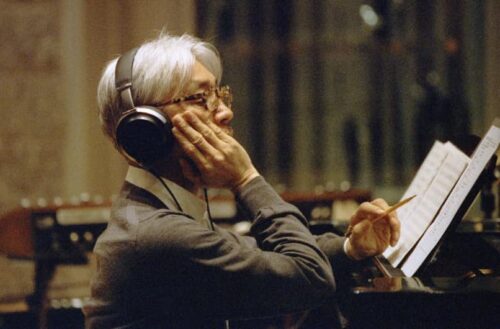

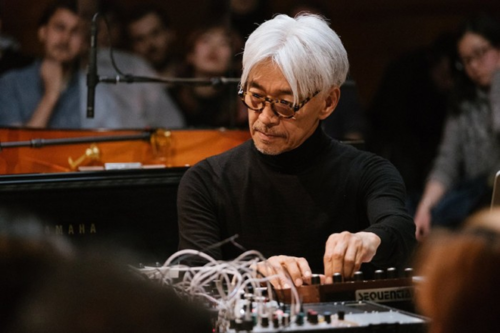
Chaque morceau porte le nom du jour où il fut créé – entre improvisation et composition. On y retrouve ses fameuses nappes sonores cotonneuses dont lui seul a le secret, surplombées par quelques notes de piano acoustique qui égrènent une mélodie originale où évocatrice. En mode ambient, on découvre dans la sixième pièce (20220207) une citation explicite et insistante du Dies Irae, cet hymne médiéval liturgique apocalyptique si souvent utilisé par les compositeurs pour suggérer la mort (Liszt, Mel Bonis, Rachmaninov, Chostakovitch, Pierre Henry, Louis Andriessen, Wendy Carlos etc.) La Sarabande (20220302), en huitième pièce (la seule qui porte un nom) nous rappelle bien évidemment Erik Satie et ses Trois Sarabandes de jeunesse mais aussi à plusieurs moments évidents la célèbre Sarabande de Haendel utilisée dans le duel mortel à la fin de Barry Lyndon de Stanley Kubrick – en écho à son propre duel contre le cancer. Plusieurs pièces évoquent également le compositeur catalan Federico Mompou avec ses Paisajes (dans 20211130) et sa Música callada (dans 20220123) où le thème de Mompou est repris et jeté en écho toute la durée du morceau.
Comment ne pas y voir un clin d’oeil terrible quand on sait que música callada signifie littéralement : musique qui se tait. Cet album quasi posthume est tout du long rythmé par la respiration de Sakamoto, les bruits des marteaux et de la mécanique du piano le tout ponctué et conclu par quelques petites cloches et dorjés tibétains – comme pour achever une cérémonie religieuse ou célébrer le début d’une nouvelle vie.
François Mardirossian
Notre playlist Ryuichi Sakamoto :
Photos © Zakkubalan
Photos © Jeannette Montgomery Barron
Photos © Wing Shya



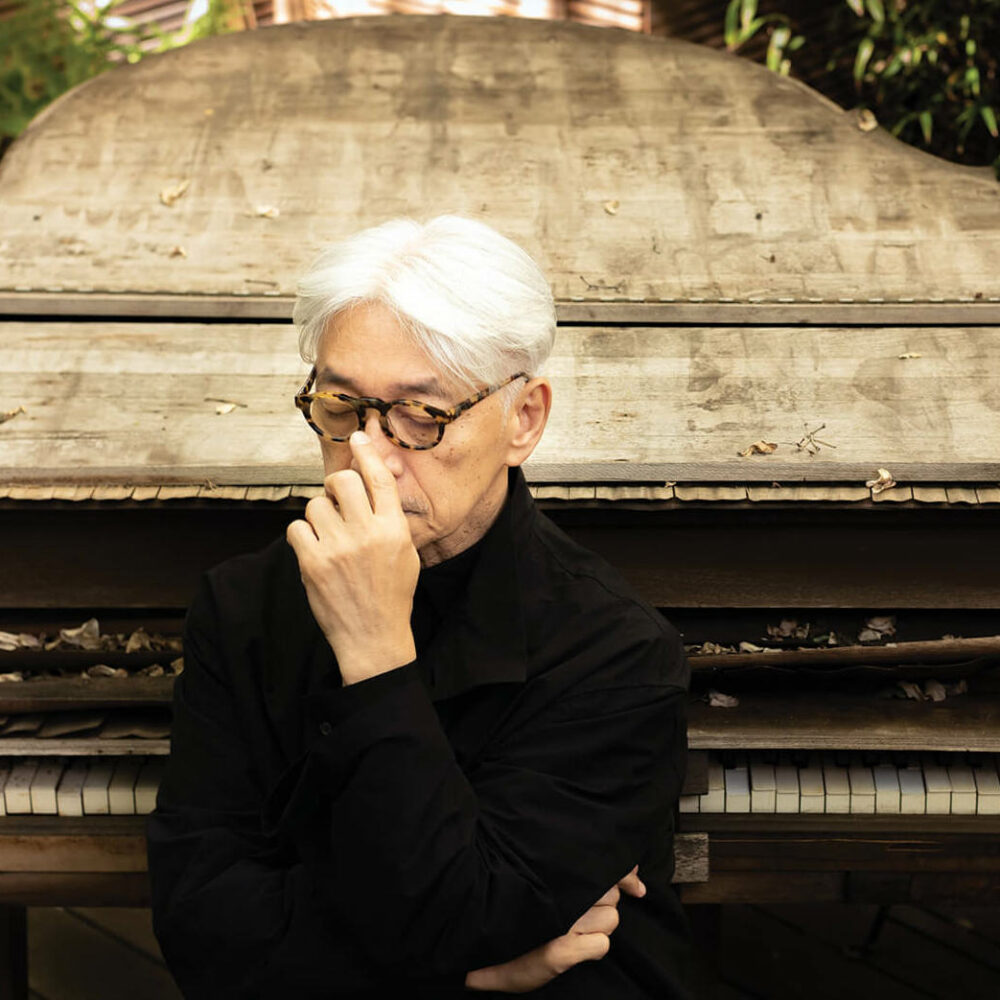)
